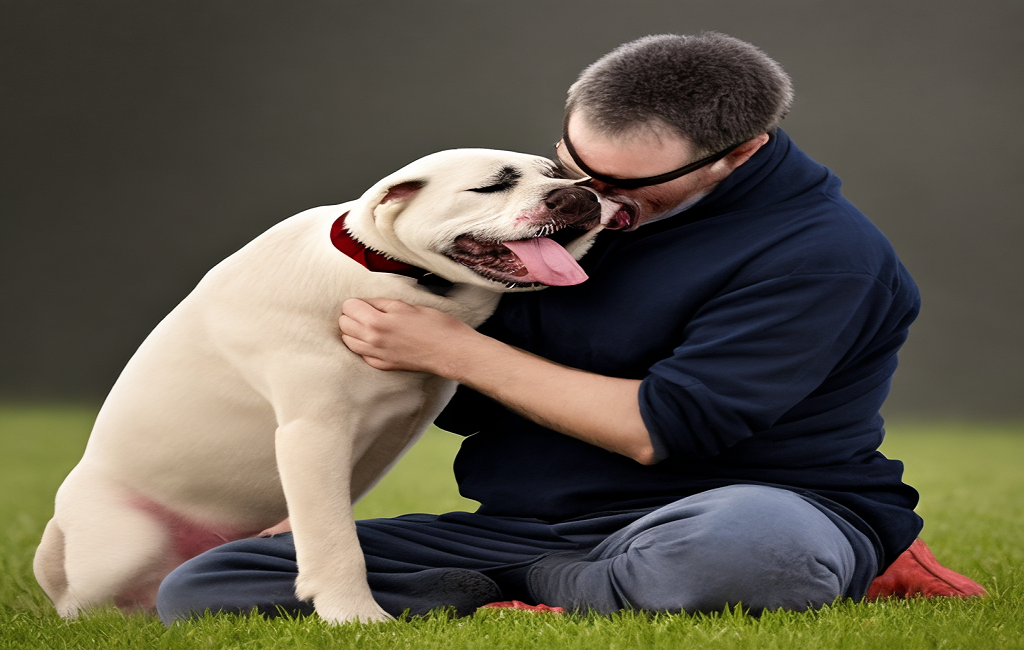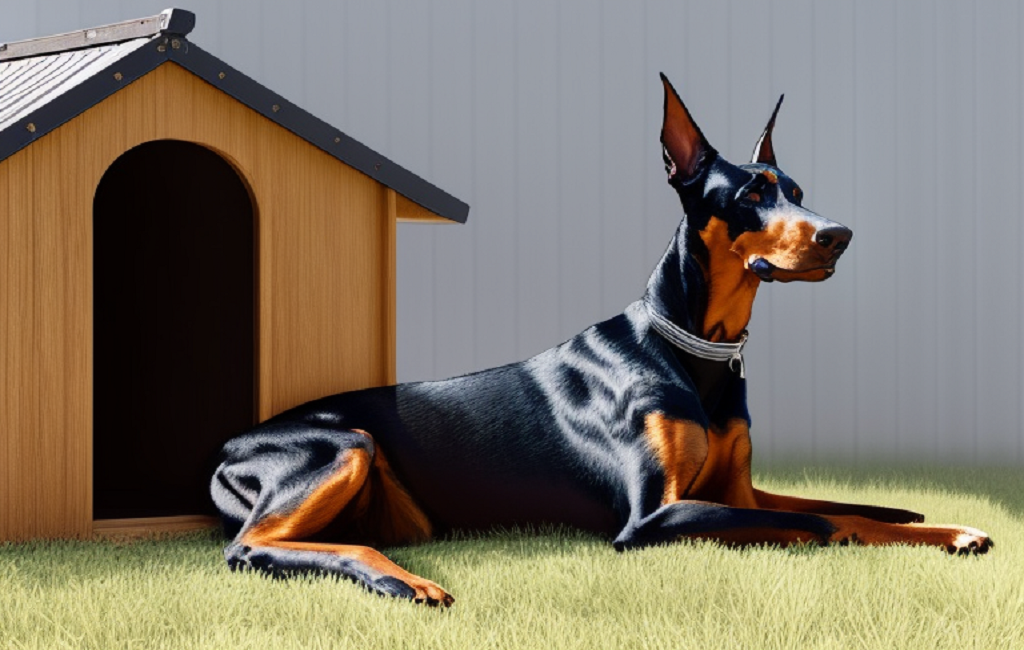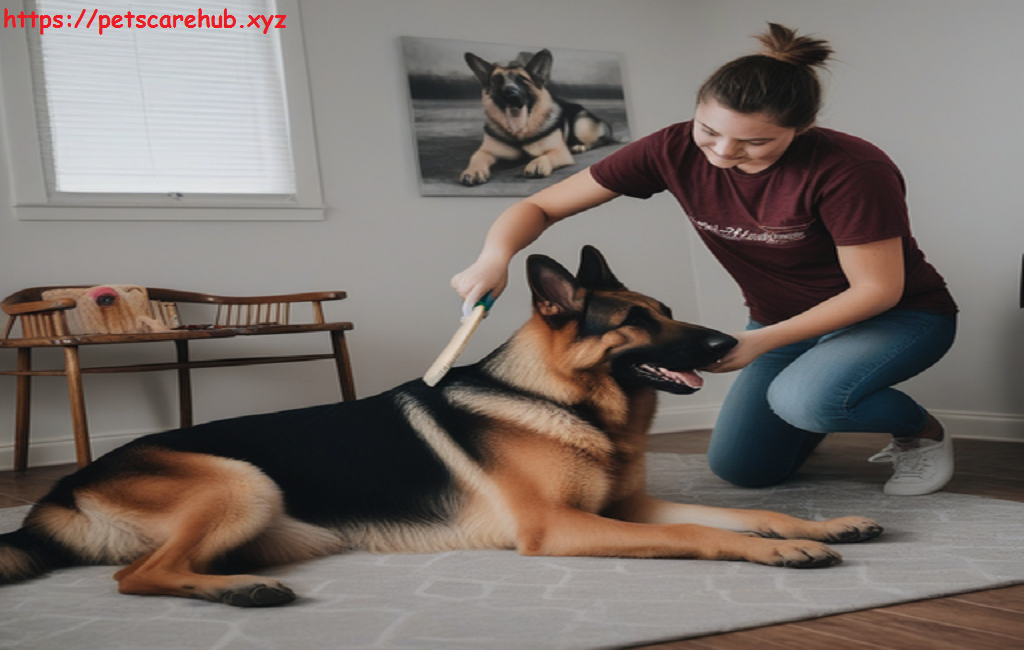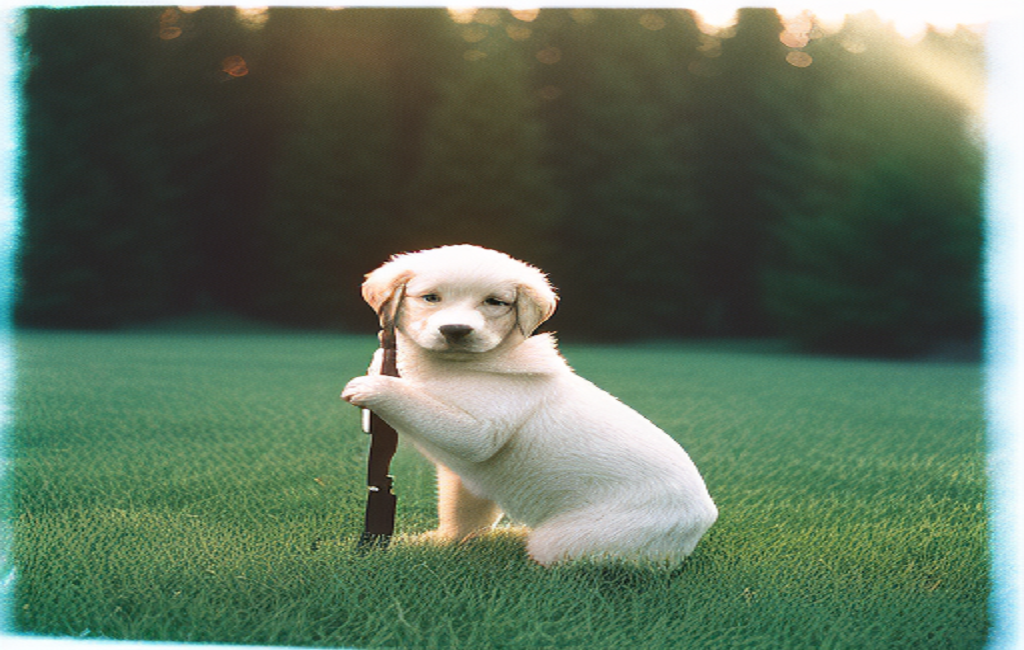Are you ready to make your dog even cuter? If so, we know just the trick for you and your pet friend: teach them how to bow. Think about how happy people will be when they see your four-legged friend dropping their head in a lovely bow! If you want to show off your dog’s skills at a family gathering or just want to add some fun to their routine, we have step-by-step steps that will help them learn this cute trick in no time. Get some treats ready, because you’re about to start a fun trip to teach your dog how to bow.
At first, the trick of teaching a dog how to bow might seem scary and hard, but with patience and hard work, it can be done easily. Not only is it fun to teach your dog this trick, but it also makes your relationship with your pet friend stronger. Teaching your dog new tricks is another great way to keep their mind active and give them a sense of success.

You should know that every dog learns at their own pace before you start the step-by-step directions. Some people may learn how to bow quickly, while others may need a little more time. If your dog doesn’t learn the trick right away, don’t give up. With constant practice, your dog will get it.
First, you’ll need to get some treats for your dog while you praise him. This could be any of their favorite store-bought treats or small chunks of boiled chicken or cheese. The treats should be small enough for your dog to handle while you train them.
After getting the treats ready, it’s time to train! Putting your dog in the right position is the first step. Take their hand and lift it up to their face while saying “bow” in a strong but gentle voice. This will teach them the link between the word “bow” and the movement that is wanted. Do this step a few times until your dog starts to connect the word with dropping their head.
Next, put the treat in front of your dog’s nose and move it slowly down to their belly. As they follow the treat with their nose, their heads should naturally fall back and bow. Tell them “good bow” and give them the treat as soon as their chest hits the ground. Do this several times until your dog knows how to follow the treat into a bow.
You can start adding the word “bow” before bringing your dog into place with the treat as they get used to the movement. That way, they’ll know they need to do what you tell them to do when you tell them to. Keep doing this step until your dog always reacts to the voice command.
Once they know how to bow while standing still, you can add movement by having them take a step forward while bending or while sitting down. During the teaching process, make sure to keep using treats and praise as positive feedback.
Remember that it takes time to teach your dog a new trick. Each dog learns at a different speed, so be sure to praise and support them a lot as they are being trained. If you train your dog regularly, he will soon be able to bow perfectly, making everyone happy when they see this cute trick.
Reasons why teaching your dog tricks is a good idea
Introduction:
While teaching your dog tricks is fun and interesting, it’s also good for both you and your pet friend in many ways. It makes the link between you and your dog stronger and helps with conversation, mental activity, health, and your dog’s behavior in general.
Getting close and talking:
When you teach your dog tricks, you need to trust each other, work together, and have a good relationship with your dog. Spending time with your dog while training builds a special bond that helps you both understand each other better. Dogs learn better ways to talk to people through voice directions, body language, and movements as they learn new tricks. Because of this, they may be able to understand better and follow your instructions better in other areas of training as well.
Stimulating the mind:
Dogs are smart animals that need to be stimulated all the time. Giving them new tricks keeps their minds sharp and meets their need for mental exercise. Learning something new every day is good for dogs too, just like it’s good for people to keep their minds busy and aware. Mental activity keeps you from getting bored, which can make you do bad things like chewing on furniture or barking too much.
Fitness for life:
A lot of tricks require your dog to do physical things like sliding, jumping, or standing. These activities help your dog stay fit. Regularly performing these tricks can also help them build muscle, improve their coordination, speed, balance, and flexibility, which will eventually lead to better general health.

Benefits for behavior:
Just like people need healthy ways to deal with stress or excess energy, dogs need healthy ways to use their extra energy. Trick training gives them a good way to release their energy in a healthy way. Also, learning new tricks might make them feel more confident and less anxious and scared.
Have fun and relax:
Finally, teaching your dog tricks is just plain fun for both of you. It might be a fun way to spend time together and make pleasant memories. It will keep you and your dog both happy and entertained.
Conclusion:
Teaching your dog tricks is good for both their physical and mental health. It also makes your relationship with your dog stronger and gives you both a lot of fun. So today is a good day to start teaching your friend some new tricks.
What is the bow trick, and why is it a good one to teach?
The bow trick is cute and famous, and lots of dog owners love to teach their pets it. A dog does this amazing move by dropping its head and chest to the ground while holding its back end high in the air, like a bow. It looks cute and is good for your dog’s health in a number of ways.
This is a useful trick for your dog to learn because it can be taught to dogs of all ages and breeds. The task may seem hard, but if you’re patient and consistent, your dog will learn to bow in no time. So what makes this trick such a good one to teach? Let’s look at some of the reasons below.
- Getting some exercise:
For your dog to learn how to bow, they need to use their muscles and stretch out some parts of their body. Dogs need regular exercise for their health, just like people do. When they bow, it helps tone and strengthen the muscles in their front legs, back, neck, shoulders, and stomach. Also, if your dog has problems with being flexible or with his joints, doing this movement regularly can help these areas get better.
- Stimulating the mind:
Dogs are smart animals that need mental stimulation just as much as they need physical exercise. Teaching them new tricks keeps their minds busy and stops them from getting bored or acting out, which can happen when they have too much energy or not enough to think about. Your dog needs to pay attention as they learn to connect the word or hand signal with the action in the bow trick. Your dog may get just as tired from this mental workout as from a long walk or play time.
- Getting close and talking:
You and your furry friend will feel closer to each other when you train your dog. It takes time, consistency, and positive reinforcement, but these things will help you build trust with your dog. You and your dog can talk to each other better after learning the bow trick. You’ll both be able to read each other’s body language better as they learn to connect voice and body language cues with actions.
- What a cool party trick:
You know what? It’s always fun to show off our dogs’ tricks to family and friends, especially when they’re something new like the bow trick. People who come over will be amazed at how well-trained your dog is. Some may even ask you for help teaching their own dog this trick.
- Good for grooming or going to the vet:
There are also useful things you can do in everyday life after teaching your dog to bow. If your dog needs to be groomed or have their nails trimmed often, for example, teaching them to bow can make these tasks easier for both of you. The bow trick can also help keep your dog calm and in one place if they have to go to the vet often or have medical procedures that require them to stay still for long periods of time.
Finally, teaching your dog the bow trick is a great thing to do. In addition to giving your dog exercise and mental stimulation, it also helps you and your dog bond stronger and communicate better. People will be impressed when they see your dog do this trick. It can be used in many situations. That being said, why not teach your furry friend this cute move right now?
Easy-to-follow instructions on how to teach your dog to bow:
This is a cute trick you can teach your dog that can also help them get stronger and more balanced. Any age dog can learn this trick. It works for both big and small dogs. You can teach your dog how to bow by following these easy steps.

Step 1: Get some treats.
You should always have lots of treats on hand before you try to teach your dog a new trick. Pick treats that are small, soft, and quick for your dog to chew. These will keep them motivated during the training process by giving them positive feedback.
Step 2: Sit down first.
Your dog should already know how to sit before you teach them how to bow. If they don’t, teach them this simple command first. Now you can move on. Proceed to the next step once they are able to sit when told to.
Step 3: Get them to come down.
Hold the treat close to their nose so they can smell it but can’t get to it with their mouth. Gradually lower the treat towards the ground between their front paws. Since they are following the treat with their nose, their heads will naturally drop to the ground.
Step 4: Add Verbal Cue.
As your dog starts lowering its head towards the ground, say “bow” or another verbal cue of your choice. Make sure to use a clear and consistent cue every time you practice.
Step 5: Transition to Floor.
Once your dog is consistently lowering its head towards the treat, gradually move the treat closer to the ground until it touches. This will encourage your dog to lower its body towards the floor.
Step 6: Add Hand Gesture.
When your dog has successfully lowered its body to the ground, you can add a hand gesture to accompany the verbal cue “bow”. Hold your hand out in front of your dog and bring it down towards the ground as if you were bowing with them.
Step 7: Reward and Practice.
As soon as your dog has successfully completed the bow, reward them with a treat and lots of praise. Practice this trick multiple times a day, gradually increasing the duration of their bow before giving them a treat.
Step 8: Add Distractions.
Once your dog has mastered bowing at home, try practicing in different environments or with distractions around. This will help reinforce their understanding of the trick and make sure they can perform it in any situation.
Remember to be patient and consistent when training your dog to bow. It may take some dogs longer than others to learn, so don’t get discouraged if they don’t get it right away. With practice and positive reinforcement , your dog will soon be bowing on command like a pro.
Step 1: Choose your command and reward system
The first step to teaching your pooch to bow is deciding on a command and reward system. This will provide consistency and structure for your dog, helping them understand what is expected of them during the training process.
Command:
When choosing a command for this trick, it’s important to keep it short, clear, and distinct from other commands your dog may know. For example, “bow” or “curtsy” are great options as they are simple and easy to remember. Avoid using similar-sounding words such as “down” or “lay down”, as these could confuse your dog.
Reward System:
Positive reinforcement is key when teaching new tricks to your pooch. This means rewarding them with treats, verbal praise, and physical affection when they demonstrate the desired behavior. It’s important to find a high-value treat that will motivate your dog during training sessions. Small pieces of cooked chicken or cheese work well as they are tasty and easy for dogs to consume quickly.
Another effective way to reinforce good behavior is through clicker training. A clicker is a small device that makes a distinct sound when pressed. The purpose of the clicker is to mark the exact moment when your dog performs the desired behavior, making it easier for them to understand what action earned them the treat.
It’s essential to be consistent with rewards throughout the training process. Giving treats randomly or skipping rewards after certain attempts can confuse your dog and make it harder for them to learn the trick.
Step 2: Start with the basics – sit and stay commands
Before teaching your pooch how to bow, it’s important to establish a strong foundation of basic obedience commands such as sit and stay. These commands will not only make it easier for your dog to understand what you want from them but will also help them develop focus and self-control.

- Teach the Sit Command
Start by standing in front of your dog with a treat in your hand. Hold the treat close to their nose and slowly move your hand up over their head. As their head follows the treat, their hindquarters should naturally lower into a sitting position. As soon as they are in a sit, say “sit” and give them the treat.
Repeat this process multiple times until your dog starts to associate the word “sit” with the action of sitting down. It’s important to reward them every time they successfully perform the command.
- Add Verbal Cue and Hand Signal
Once your pooch has mastered the sit command, it’s time to add a verbal cue and hand signal that you can use consistently when giving this command.
For example, you can say “sit” while holding out your open palm facing upwards towards their nose. This visual cue will help reinforce what you are asking them to do.
- Progress to Distractions
As your dog becomes more proficient at following the sit command, start introducing distractions such as other people or dogs walking by or throwing toys nearby. This will test their ability to stay focused and obey your commands even in a distracting environment.
If your dog struggles with staying in the sit position, start by asking them to hold the sit for only a few seconds before rewarding them. Gradually increase the duration of time they have to stay sitting before getting their treat.
- Teach the Stay Command
Once your dog has mastered the sit command, you can move on to teaching them how to stay in that position. Start by asking them to sit, then give them the verbal cue and hand signal for “stay.”
Take a step back and wait for a few seconds before giving them a treat and verbal praise. Gradually increase the distance you are asking them to stay for until they can hold the position for at least 30 seconds.
When your dog successfully stays in place, make sure to reward them with lots of praise and treats. This will help reinforce their understanding of what you are asking from them.
Step 3: Teaching Your Dog How to Bow
Now that your dog has a good understanding of basic obedience commands, it’s time to move on to teaching them how to bow. Here’s how:
- Find an Appropriate Spot
Choose a quiet spot with enough space for your pooch to comfortably perform the bow. Make sure there are no distractions that could take their attention away from the task at hand.
- Ask Them to Sit
Start by asking your dog to sit in front of you. If they don’t know this command yet, go back to Step 2 and work on it before attempting to teach them how to bow.
- Lure Them Into a Bowing Position
With a treat in your hand, slowly lower it towards the ground between your dog’s front paws. As they follow the treat with their head, their hindquarters should come up into a standing position and their chest will lower slightly.
If your dog doesn’t naturally follow the treat into a bowing position, you can gently guide their front legs down while keeping their hindquarters in place.
- Add The Command “Bow”
As soon as your dog is in a bowed position, say “bow” and give them the treat. This will help them associate the word “bow” with the action of lowering into a bowing position.

- Practice and Repeat
Repeat this process multiple times until your pooch starts to understand what you are asking from them when you give the command “bow.” Remember to always reward them for successfully performing the action.
Step 4: Introduce the bow motion using a treat as bait
Now that your pooch is comfortable with the basic positioning for the bow, it’s time to introduce the actual movement. This step will involve using treats as bait to help your dog understand what behavior you are looking for.
- Get your treats ready: Before starting this step, make sure you have some small and tasty treats on hand. These treats will serve as an incentive for your dog to perform the bow motion.
- Hold a treat in front of your dog’s nose: Begin by holding a treat right in front of your dog’s nose. Make sure it is low enough so that he can smell it but not low enough for him to eat it just yet.
- Slowly lower the treat towards the ground: Gently lower the treat towards the ground while keeping it close to his nose. As he follows the treat with his eyes and nose, he should naturally start lowering his head down towards the ground.
- Use a command or cue word: As soon as your dog starts lowering his head, use a command word like “bow” or “down” to associate this action with a specific cue.
- Reward him when he bows down: As soon as your dog successfully bows down, reward him with the treat and give lots of praise and affection. Repeat this process several times until your dog consistently offers the bow motion when prompted with the cue word and treat.
- Increase distance between yourself and your dog: As your dog becomes more confident with the bow motion, slowly start increasing the distance between yourself and your dog. This will help him understand that he needs to perform the action even when you are not right next to him.
- Practice without treats: Once your dog has mastered the bow motion with treats, start practicing without treats. Use just the cue word or hand signal and reward him with praise and affection when he performs the bow.
Remember to always keep training sessions short and fun for your pooch. With consistent practice, your dog will be bowing on command in no time!
Step 5: Add in the verbal command and hand gesture
Once your dog is comfortable with the physical cue of you gently pushing down on their back, it’s time to add in a verbal command and hand gesture. This step will help solidify the behavior and turn it into a cute trick that impresses your friends and family.
- Choose a verbal command: The first step is to choose a word or phrase that you will use as the verbal cue for the bowing behavior. Make sure it is short and easy to say, such as “bow” or “take a bow”. Consistency is key, so make sure everyone in your household uses the same command.
- Add in the hand gesture: A hand gesture can help reinforce the verbal command and give your dog a visual cue of what you want them to do. For this trick, we recommend using an open palm facing towards the ground, resembling a sweeping motion downwards.

- Timing is important: When introducing the new verbal command and hand gesture, timing is crucial. You want to say the command and make the hand gesture while your dog is in the process of bowing naturally from being pushed down on their back. This will help associate the two cues together.
- Reward consistently: As always, positive reinforcement is vital when teaching any new behavior or trick to your pooch. Make sure to reward them every time they successfully perform a bow with both the physical cue of being gently pushed down on their back as well as following your new verbal command and hand gesture.
- Practice , practice, practice: Practice makes perfect! Repeat this step often with your dog, gradually phasing out the physical cue of being pushed down on their back until they are able to perform a bow solely based on your verbal command and hand gesture.
With consistency and positive reinforcement, your dog will soon master the cute trick of taking a bow on command. Just be patient and have fun with the process!

1 thought on “Step-by-Step Instructions on How to Teach Your Dog to Bow 2023”